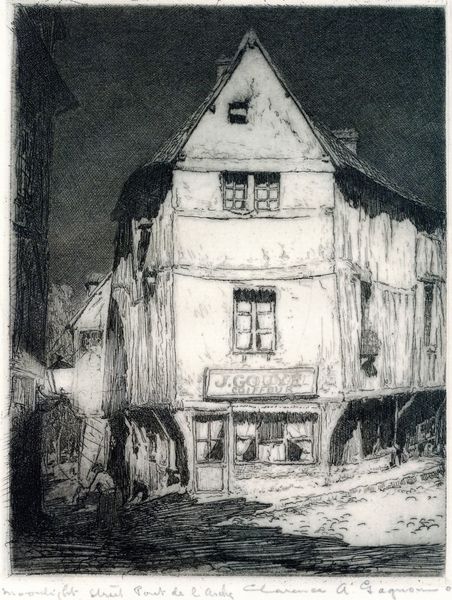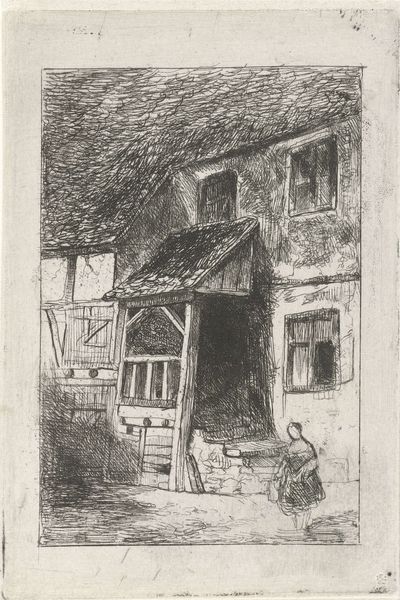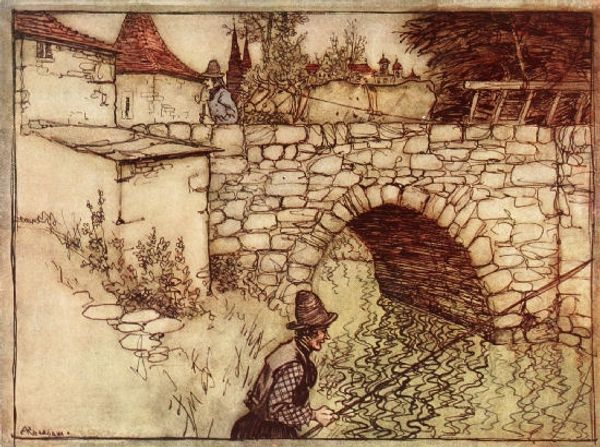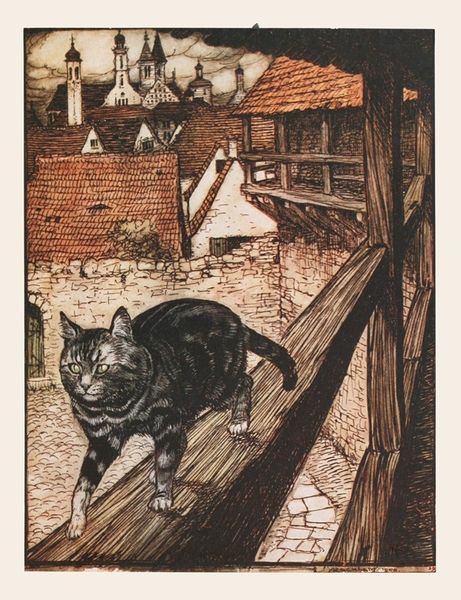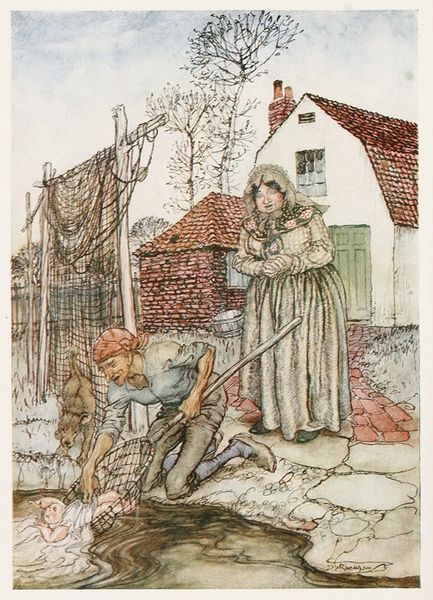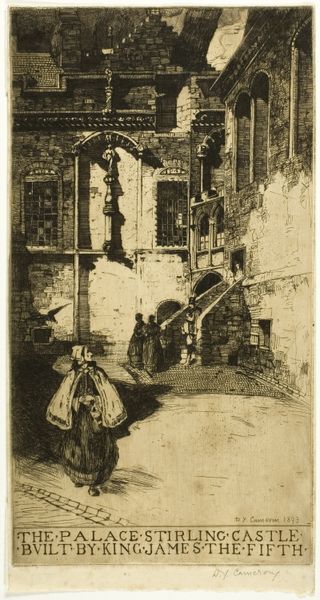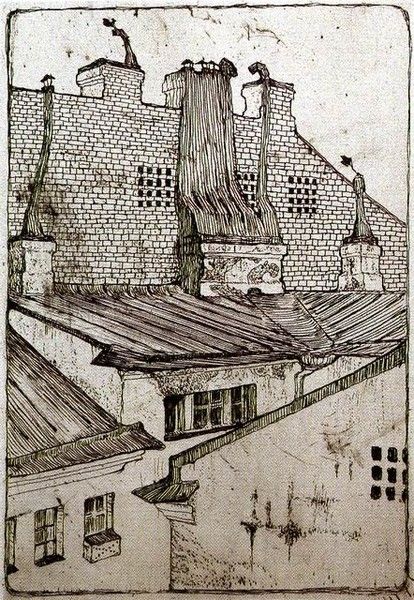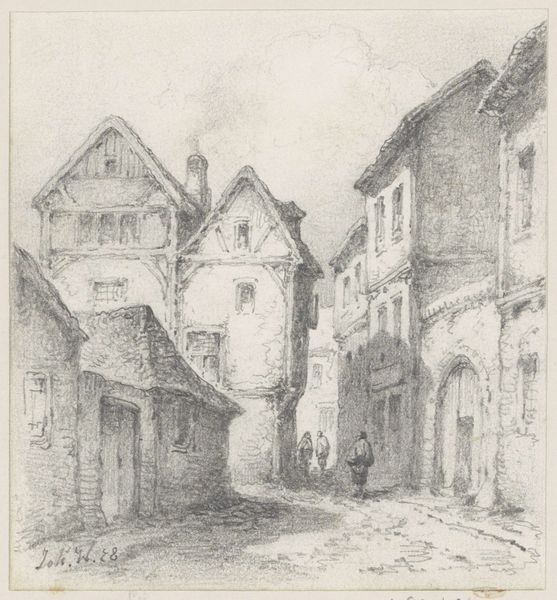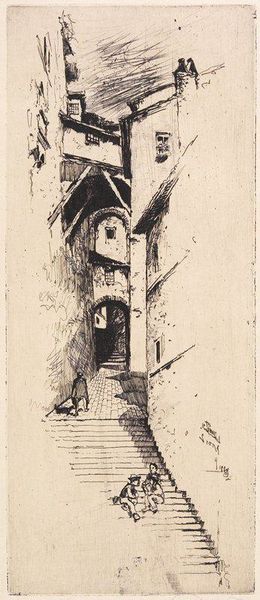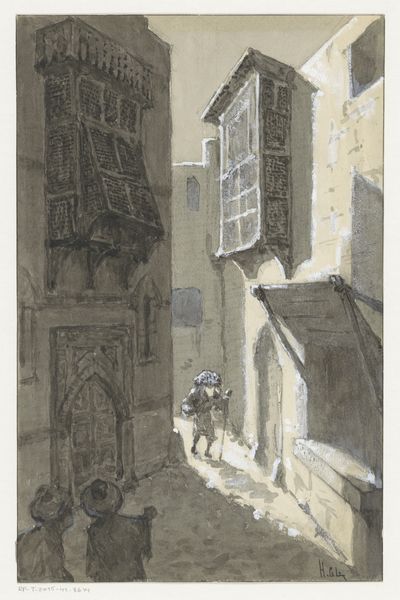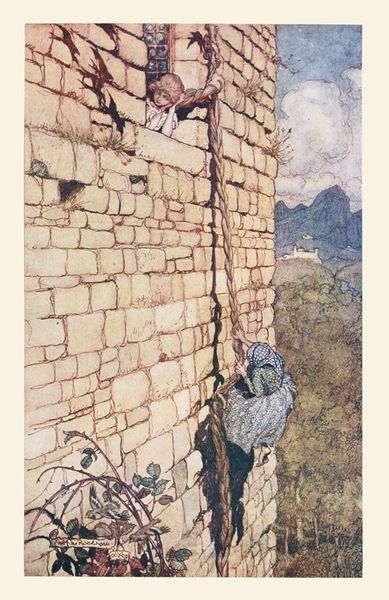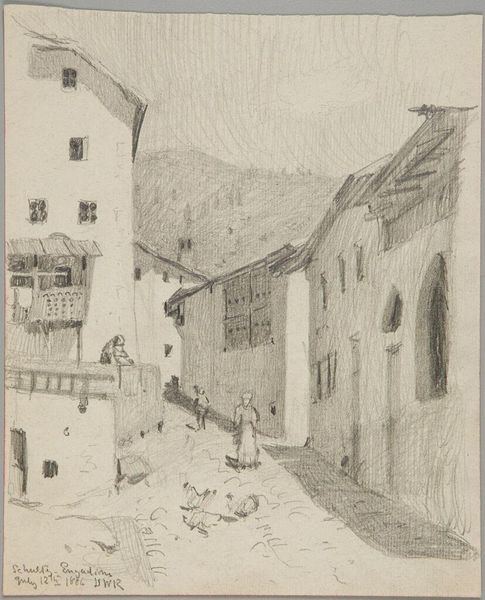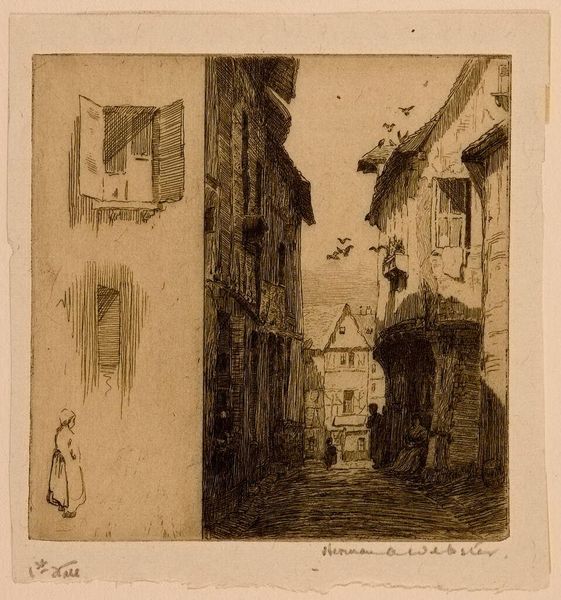
drawing, paper, watercolor, ink
#
drawing
#
narrative-art
#
ink painting
#
pencil sketch
#
paper
#
watercolor
#
ink
#
cityscape
#
watercolour illustration
Copyright: Public Domain: Artvee
Editor: So, this is "Once there was a poor old woman who lived in a village" by Arthur Rackham, from 1920, created with watercolor, ink, and drawing on paper. I'm struck by the delicate lines, but also the rather melancholic feel to the work. What symbols or meanings jump out at you when you look at this illustration? Curator: The bent figure of the woman is laden with meaning, isn’t it? It evokes countless images of poverty, hardship, and even the archetype of the crone figure in folklore. The city itself is fascinating, reflecting an antiquated world that could signal societal decay or a persistent memory. Look at how the buildings seem to almost lean in towards her, almost enclosing her. Do you think that this enclosure is intentional? Editor: It definitely adds to the feeling of oppression. It almost feels like the city itself is weighing down on her. The waterway visible through the archway...is that symbolic too? Curator: Water, especially in a fairytale context, often represents the subconscious or a journey, perhaps one she cannot embark on. The small boat suggests possibilities, escape perhaps. But does she see it? Does she have the strength for the journey? Notice the placement of the lamp. Light in art is powerful. Editor: It’s right there, almost above her head, offering guidance? Curator: Possibly, yes. The illustrator leaves clues and traces of continuity. But do the light, the potential of the water, pierce through the weight of the buildings? These images work on us psychologically, tapping into anxieties about aging, poverty, and the unknown. Rackham provides no simple answers; his illustrations linger. Editor: This makes me see beyond the surface. It’s not just a picture of a sad old woman; it’s a collection of symbols representing universal struggles. Curator: Precisely! It uses what's visible to speak to invisible realities, a dialogue between what we see, what we think, and what we feel.
Comments
No comments
Be the first to comment and join the conversation on the ultimate creative platform.
